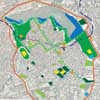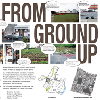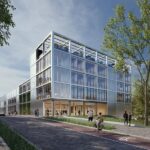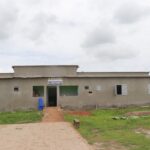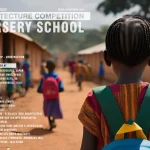Resilient City Design Competition, Building, Project, Photo, News, Design, Property, Image
ResilientCity Architecture Contest : Information
Resilient City Design Ideas Competition : Architecture Information
7 Apr 2011
Announcement of Winners of 2010 ResilientCity.org Design Ideas Competition
Winning Proposal: “Living with the Water Paradox”
After extensive deliberation of the 20 finalist entries in this years’ ResilientCity.org Design Ideas Competition, Living with the Water Paradox proposal by Nok Ratanavong, Sang Ok Kim, and James Kim was selected as the winner.
ResilientCity Competition
The Jury was of the opinion that this entry was the most effective at integrating the key principles of urban resilience into a compelling vision for how to increase the resilience of the Fish Market and surrounding area in Sydney, Australia. Although many of the entries provided important insights and developed thoughtful ideas for increasing urban resilience, Living with the Water Paradox stood out both for its understanding of how to build resilience, and for its imaginative application of resilient planning and design principles to addressing the wider implications of Australia’s deepening ecological crisis.

The Jury was impressed by many of the key insights contained in the proposal. Chief among them was its synthesis of potential planning and design responses to the threats posed by climate change, especially flooding and drought. There have already been significant water rationing and flood events in Australia, and these disturbances are only expected to worsen in frequency and intensity as climate change progresses. Jury moderator Craig Applegath commented that the winning proposal is effective because it uses the issue of water as a starting point to grapple with the larger issues of urban resilience. “It works because it considers how disturbances to the water system will ripple throughout the city, and what can be done to prepare the city’s functions to cope with those shocks and stresses,” he said.
The proposal’s defining feature is a comprehensive, district-scale system of interventions that link water to waste, food, and energy. The system responds to the higher risk of storm surges by harvesting rainwater and surface runoff. As part of the proposed strategy, rain water is used in conjunction with desalinated water to support local decentralized food production in front yard and rooftop gardens, and for water features that enhance the appearance and function of public spaces.
“As desertification continues to move into Australia’s wheat belt, this entry’s proposal to give people options for eating directly from urban plots becomes both more pressing and more attractive,” said jury member Peter Howard. The proposal calls for urban farming research into drought and flood resistant plants and growing methods through community-owned cooperatives. Waste food is returned to food production as compost, while waste methane is used to generate electricity. In order to reduce carbon dependency and prepare for a post-carbon future, electrical power supply is further augmented by micro-hydro stations as well as by small-scale solar and wind installations that support desalination, food and aquaculture production, and waste processing.
“This proposal is successful in part because it breaks with the tendency to see core functions at purely the city or regional scale,” said jury member Michael Haggerty. The jury agreed that decentralized and redundant micro facilities are likely to increase the capacity for resilience because they can help to reduce incidences of cascading failures, would not require large investments of capital or an aggregation of new resources or technologies, and carry the added benefit of being easier to maintain. Jury member Douglas Pollard added that, “although this proposal does not invent an entirely new vision, it does knit together enough small moves to make a vision that is coherent and realistic.”
While the Jury felt the proposal would have benefited from a closer examination of the strategies that could be used for adapting to other key threats, such as the rising sea level and an increase in the number and intensity of bushfires, it concluded that Living with the Water Paradox was overall the most integrated approach to building resilience as well as the most illustrative of the complexity that is emblematic of this competition.
Best Insight or Most Innovative Idea Prize: “Full of Fuel”
The Jury decided that in addition to a first price, it wished to award a prize to the most innovative insight or idea. It was clear to the members of the jury that the Full of Fuel proposal by Anthony Joyeux should be named for this prize. This entry provided some valuable clues about the future of the post-carbon urban landscape, with a focus on Lyon, France.
The members of the Jury appreciated both the pragmatic and poetic qualities of reimagining and repurposing the infrastructure of the carbon economy for a post-carbon world. Full of Fuel offered a clear and distinct perspective on the city as a place of opportunity. Peter Howard said that, “Full of Fuel offers up an interesting contrast to some of the other, more performance-based proposals.
This one is predicated on a more subtle strategy of encouraging people to use the city in a different way.” Michael Haggerty added that, “reimagining gas stations as sites of community programs and action could have a really positive influence on people’s mobility and their relation to the public realm.” The Jury believed the proposal could be a generative act that kicks off the process of building cycling and pedestrian networks and creating a stronger sense of place and community. Other redeeming qualities of this proposal were its redundancy, interconnectedness, and adaptability to other contexts.
While it might have been interesting to push the idea even further to incorporate other features of the carbon-based built environment, in the end the Jury was convinced to award the prize for insight and innovation to Anthony’s proposal.
Best Video Prize
The Jury did not feel that there was a wide enough range of videos submitted to fairly determine a winner in this category. However, it was decided to award each submission an appreciation prize for their efforts. Entrants will each receive a flip video camera.
Honorable Mentions: “Manifestations for a City” and “FIH in Fairview Mall”
The Jury was of the opinion that two of the competition blogs deserved honourable mention because of the important insights they contributed to the understanding of how the capacity for resilience could be developed.
The Jury found that Digant Shah’s proposal, Manifestations for a City, for Nagpur, India, benefited from a thorough overview of the city’s historical and present-day context, a detailed approach to solid waste and waste water management, and a clear sense of the potential for resilient strategies to foster ecological restoration and urban renewal.
The Jury commented that Digant provided an excellent strategy for decentralizing infrastructure, downloading it to the neighbourhood scale in a more affordable and ecologically sound fashion, thereby regenerating the urban landscape and helping to create a stronger sense of place for Nagpur’s residents.
“This is one of the best treatments of a city’s evolution up to the present day,” said moderator Craig Applegath.
Overall, the Jury felt that it might have been even stronger had it delved further into the implications of future discontinuities in Nagpur stemming from climate change and peak oil. Consideration of other urban systems, such as energy and food, and their relationship to the city’s water and waste system might have shifted the proposal away from being mainly about urban renewal, to being more about urban resilience. It might have also benefited from a more comprehensive test against existing patterns of use and water management that considered space constraints and other barriers.
Douglas Pollard noted that this proposal could readily be deployed in slums and other concentrated areas of urban poor where there are high levels of sub-economic activity and social capital for operating the water and waste management system, without significant investments of capital. “A proposal like this could have a huge impact for a very large number of people,” he said. Overall, the Jury recognized this as one of the strongest entries for its potential to improve the health and quality of life of significant numbers of people as well as its aesthetic and social contributions to human settlement.
The FIH in Fairview Mall proposal by Bronwyn White also received praise from the Jury for helping to redefine the concept of a mall. The thoroughly researched proposal won high marks for creatively adapting existing methods of local food production in a way that was both relevant and applicable to a wide spectrum of situations.
Bronwyn’s proposal shows how, contrary to conventional wisdom and patterns of development, revitalization in malls can be more substantial than simply inviting in brand-name retail megastores. The Jury found that using the mall as a focal point for uniting all of the dimensions and uses of food in one space, from production and preparation to sale and consumption, would likely have positive socioeconomic outcomes.
The opportunity for the Food Innovation Hubs (FIH) idea to be scaled and adapted to other failing malls also impressed the Jury, which believed that these hubs could kick start the development of regional food networks. “By taking some technologies that already exist on the shelf, like growing food on roofs and walls, and because of its relevance to a wide spectrum of situations, this proposal deserves high marks,” said jury member Douglas Pollard.
Recognizing that people do not normally associate malls with food production, the Jury would have liked to see more elaboration of plans to conduct public outreach and redefine the property and its use, although the proposal’s Education Center was a step in the right direction. In general the members of Jury felt that the proposal did a terrific job of focusing on food, although if the focus had been widened to explore a greater heterogeneity of uses and functions, especially those that could support food production such as energy generation and grey water recovery, then it might have been even stronger. As large spaces, malls have a great potential to be converted to multi use. “Including other services like daycare, and even some residential, might help to make the mall into the truly resilient hub this proposal hopes it can become,” said Michael Haggerty.
Concluding Insights
The Jury felt that all of the finalist submissions were very thoughtful and impressive, and that, as a whole, contributed a great deal to the emerging discourse on urban resilience. Some of the key insights that emerged in the Jury’s discussion of these submissions included the following points:
• Integration: While the Jury sought entries that took an integrated approach to resilience as much as possible, it also determined that expecting complete and fully integrated solutions places a high burden on the entrants, due to the inherently iterative and emergent properties of resilience.
• Context: The Jury found that it was important for entrants to establish the context in which their proposals were made. The Jury was most impressed by those proposals that had an appreciation of the complexity of context as well as the uncertainty of future contexts in a world beset by climate change, peak oil, and other, as yet unknown challenges. Craig Applegath commented that, “this competition is akin to a test of our understanding of the world. The real complexities of the world in which we have to create form in many ways still lie beyond our ability to grapple with them.” These proposals help us get a little closer to understanding and working with that underlying complexity and uncertainty.
• Emblematic: The point of the competition was not so much about finding a winner that illustrates exactly how to ‘do’ resilience. Instead it was hoped that this competition, as a thought-provoking exercise, might accelerate or catalyze our understanding of complexity and uncertainty, with a view to finding some strategies that are resonant and are emblematic of how the process of building the capacity for urban resilience might unfold in a variety of different contexts (places, scales, forms, etc.). Therefore the Jury was attracted to proposals that were emblematic of a good strategy or set of strategies.
• Form: Whereas during the last century building design was often a process driven by function – an approach summed up by the phrase “form follows function” – resilience might require a different approach in which a series of possibilities are projected forward in time, to which space and form must be ready to adapt in order to meet the unique challenges of each possibility. One Jury member offered up the paraphrase “form follows many functions” to describe the generic, adaptable qualities that could help to define the future of resilient design.
• Scalable + Replicable: Other criteria the Jury used to assess entries were whether the proposals were replicable in other places, and whether they were scalable to fit other contexts.
15 Oct 2010
2010 Design Ideas Blog competition Public Vote
Resilient City held a web-based design ideas competition and are trying to reach as many people as possible for our “people’s choice award”.
The voting is scheduled to end on 29 Oct 2010. More information about the competition, and our website can be found at the links below.
Resilient City Design Ideas Competition – external link
+
Resilient City – external link
Previously:
1 Jun 2010
ResilientCity.org 2010 Design Ideas Competition Announcement
To all contestants in the ResilientCity.org 2010 Design Ideas Competition
I would first like to thank everyone for their participation in this year’s Design Ideas Competition. We have had an amazing number of registrations this year – 4 times as many as last year!
This is great news for the global community since more and more people are becoming aware of the importance of increasing the resilience of our cities to the future impacts of climate change and peak oil. And more people are trying to find solutions to them!
Since this growth in the number of registrations was unexpected, the result has been a delay in processing registrations and setting up contestant’s blog sites.
Because of this we have decided to extend the deadline for blog submissions one (1) week from 30 May to 6 Jun 2010.
I would also like to take this opportunity to apologize to anyone who has affected by the back log and was not able to gain access to the blog site until late last week. I hope that by extending the deadline you will be able to put your best work into your blogs.
ResilientCity Design Ideas Competition 2010
Following upon the successful 2009 ResilientCity.org Design Ideas Competition, we are launching the 2010 ResilientCity.org Design Ideas Competition. The description of the competition is as follows:
The 2010 ResilientCity.org Design Ideas Competition is an exciting opportunity for architects, city planners and urban designers, engineers, and landscape architects, including students, graduate students and interns of these disciplines around the world to contribute ideas about creating more resilient cities.
The purpose of the ResilientCity.org Design Ideas Competition is to stimulate thinking and discourse about how to increase the resilience of our cities as we move into a century where our cities will be subjected to the combined environmental and economic impacts of peak oil and climate change.
There are many possible opportunities for increasing the resilience of our cities, and in the 2010 Design Ideas Competition we are looking for you to explore ideas about how you would increase the resilience of the city you live in. To this end, the 2010 competition’s theme will be: “Building Urban Resilience where you live with what you have.”
There will be a $1,000 CAN prize for our jury’s selection of the best planning and design idea, and there will also be an additional prize of $1,000 CAN for the best video mini-documentary. Registration Deadline: 14 May 2010; Submission Deadline: 28 May 2010. For more information about the competition visit: www.ResilientCity.org
ResilientCity.org is a not-for-profit network of architects, urban planners and designers, engineers, and landscape architects focused on developing creative, practical, and implementable resilient planning and building design strategies that help address our century’s most important challenge: namely, dealing with the significant economic and environmental stresses that will be associated with climate change and peak oil in the context of human settlement.
ResilientCity.org Design Ideas Competition information from ResilientCity 140210
ResilientCity.org Design Ideas Competition Winner 2009
Winning team: Michael Haggerty and Raj Kottamasu
Michael Haggerty and Raj Kottamasu are urban designers in New York City. Recently, their proposal for the Brooklyn Red Hook Ballfields food vendors market was recognized by Architecture for Humanity. They are also contributors to the 2009 International Architecture Biennale Rotterdam. Michael attended Harvard University Graduate School of Design and works at Perkins and Will. Raj is a graduate of MIT’s Department of Urban Studies and Planning and works at the New York City Department of Parks and Recreation. They are members of the same food cooperative in Brooklyn.
Project Description:
“Our proposal builds resilience to peak oil and climate change by re-establishing the relationship between people, natural systems and the urban ground plane. “From the Ground Up” introduces new food systems into neighborhood spaces – a public school, a housing development, and a BRT corridor – that are undergoing change and re-organization.
In the natural world, opportunities for novelty are most abundant when systems re-organize. Using some resilience thinking of our own, we began to see fertile ground in spaces like vacant lots and pot-holed streets, usually thought of as signs of urban failure. Our neighborhood plan provides a hierarchy of food production and processing facilities through adaptation of various kinds of ground. These are connected by a new green corridor system that is a space of congregation, distribution, and exchange.
The proposal emphasizes, in particular, the following ‘Resilient City Design Principles’:
– Local self-sufficiency
– Systems diversity
– Systems redundancy
– Waste = Food
Architecture Competitions
Piraeus Tower 2010 – Changing the Face/Façades Reformation Contest, Greece
Piraeus Tower Architecture Competition – open architectural ideas contest
Daylight Spaces 2010 architectural & design competition, Austria
Daylight Spaces Architecture Competition
Schindler Award 2010, International Competition
Schindler Award 2010 : Open for Applications
Greenpeace architecture competition
Building Competitions : Archive
Comments / photos for the Resilient City Design Ideas Competition Architecture Competition page welcome

